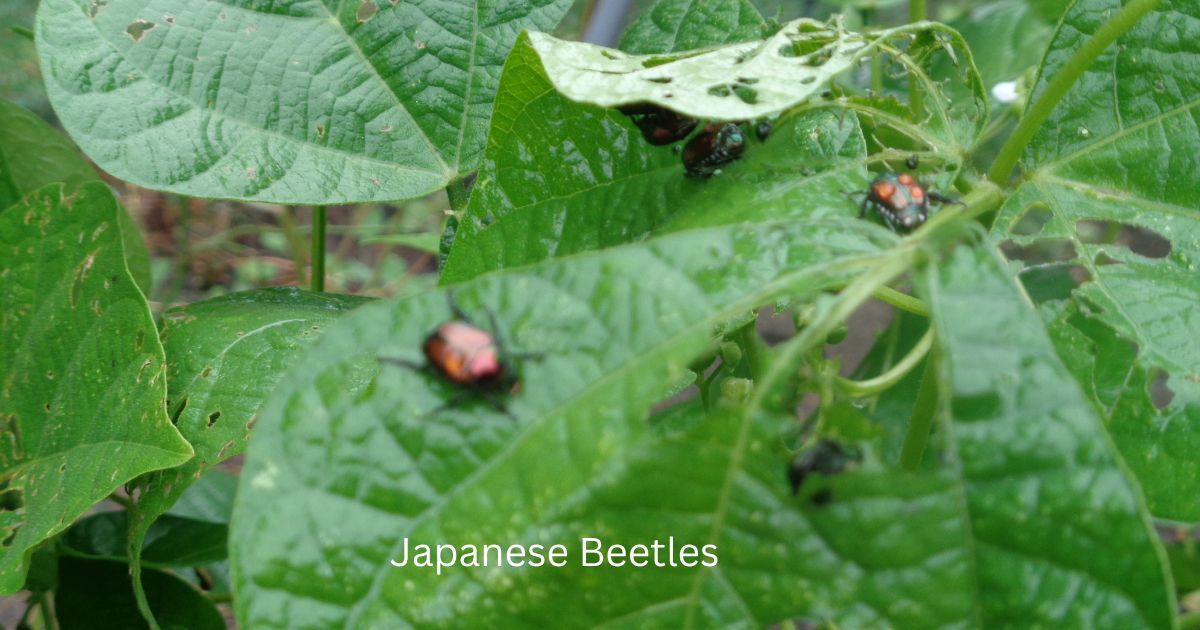Japanese beetles first made their grand entrance to North America back around the early 1900s when they hitchhiked all the way from Japan. Can you imagine stumbling upon a whole new continent just by accident? That’s exactly what happened when these beetles found themselves in New Jersey, thanks to a shipment of iris bulbs.
This introduction wasn’t just a small blip on the ecological radar. Suddenly, ecosystems across North America had to deal with an uninvited guest that chowed down on plants like no tomorrow. From garden flowers to farming crops, nothing seemed entirely safe. This unplanned invasion did more than just irritate gardeners and farmers—it caused some serious damage to the natural balance.
Understanding their life cycle gives you a leg-up on fighting back effectively. These beetles have a pretty specific pattern to their life. They start as eggs buried underground that hatch into grubs, which you might find munching on grass roots. This underground grub stage is a critical phase because it weakens the lawn before they grow up and go on a garden-eating spree.
Once they emerge as fully grown beetles, they’re all about spreading their wings—literally. Knowing their life phases allows you to target them at their most vulnerable, preventing those hungry adults from doing major damage. This knowledge is key to getting ahead in the battle against them!
Effective Strategies to Control Japanese Beetle Infestations
Tackling Japanese beetle infestations isn’t a one-size-fits-all approach—it involves trying a few strategic moves. One starting point could be picking the right sprays. Plenty of options exist out there, from conventional pesticides to more green alternatives. It’s about figuring out what works best for your specific situation. Just be sure to read up on proper application methods to ensure you’re hitting the mark.
Neem oil has gained some traction as a lesser-known secret weapon. This oil, derived from the seeds of the neem tree, disrupts the life cycle of these beetles when used correctly. It’s not a straight-up pesticide but acts as an anti-feeder, keeping them from munching on your plants, and needs to be repeated as needed. Plus, being more on the natural side, it’s a solid option if you’re hesitant about going the chemical route.
Catching these beetles in their early stages is a game-changer. Once they’ve matured, it’s like trying to stop a bike rolling downhill. By focusing efforts on the grub stage underground, you’re tackling the problem at its root, literally. Lawn treatments that target grubs are essential during this phase so if you see brown patches on your lawn is often a sign of the grub eating the grass roots and treating these areas can help in cutting down on the future adult population.
Despite the havoc they cause in gardens, Japanese beetles don’t sting or bite, and they’re harmless to pets. You won’t have to worry about them affecting your furry friends, though it’s always best to keep everyone out of the spray zone for safety. Remember that while they aren’t directly harmful to pets, their potential to destroy greenery makes controlling them important for maintaining a vibrant garden.

Selecting Beetle-Resistant Plants and Natural Allies
Picking plants that Japanese beetles aren’t drawn to can save a lot of headaches. Some plants just don’t vibe with these beetles and can be a strategic choice for your garden. Think of plants like lilac, boxwood, and yew. These are generally less inviting for beetles, giving you a fighting chance in keeping them off your green space.
Mother Nature didn’t leave us to fend for ourselves against these beetles. Birds like grackles and cardinals are natural predators quite happy to feast on Japanese beetles. So, creating a bird-friendly environment can naturally help keep beetle numbers in check. Having feeders and birdbaths can make your garden a welcoming spot for avian allies.
Companion planting is like a ninja trick for your garden. Planting species that repel beetles next to those they love can make all the difference. For example, catnip and garlic repel these beetles, so mixing these in with your roses or other beetle-prone plants can help.
Promoting a balanced ecosystem isn’t just about battling beetles. Encouraging birds and selecting beetle-resistant plants contributes to overall garden health. It’s like supporting your garden’s immune system, keeping the whole environment strong, and reducing stress on your plants.

Another option is to place netting over your plants and trees that the bettles love to feed on as this can slow them down. Just be sure to use a fine netting which in my case I picked up at the dollar store as laundry bags and sewed them together which is a non-expensive way to go. So no matter which option you decide to use in the battle against these critters we wish you all the best for your flowers and plants. Happy Gardening and I hope this info helps you out.

Japanese beetles are one of the most destructive pests I’ve dealt with in the garden, and their persistence makes them especially frustrating. In my experience, the most effective approach is a combination of patience and consistency, removing them early each morning before they spread too much damage and using natural deterrents to protect vulnerable plants. I personally prefer avoiding harsh chemicals since they can disrupt the balance of pollinators and other beneficial insects, so methods like neem oil or planting deterrent companion plants feel more sustainable. For me, battling these beetles isn’t just pest control; it’s about finding a balance between protecting the garden and respecting the ecosystem it depends on.
Hi Slavisa, I do agree these beetles can be a very difficult pest to get under control in our gardens, thanks for sharing your opinion.